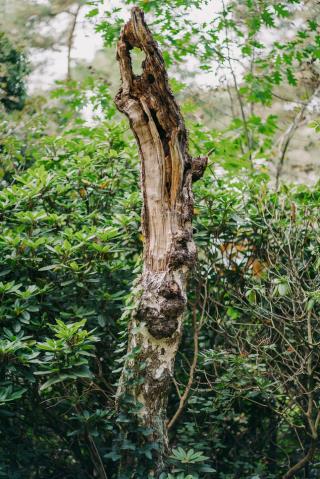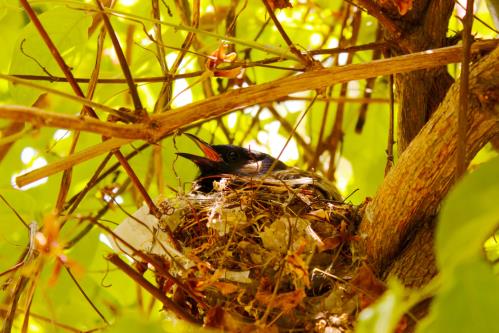This section connects to Exercises 1 Noticing trees and exercise and 2 Resistant trees
Unlike people, trees can grow to become as old as thousands of years old. Additionally, unlike people, trees do not age fast, nor do they grow with all their organs intact. In fact, they recreate the materials they need for survival every year, i.e., leaves, seeds and flowers. It is rare for a tree to die of old age alone. Instead, it is the exposure to the stress of wind, disease, insects, pollution, soil erosion, soil compaction, weather and people that will most likely cause it to deteriorate and die off. Research indicates that younger forests are better at storing carbon. One reason that might explain this is that newly deforested areas are open and sunny and are easily recolonized by fast growing species. These plants are able to extract carbon from the air and incorporate it into their biomass more quickly than mature trees that must compete with more neighbours and less sunlight.

Old trees are often (but not always) larger in size. Large trees are excellent filters for urban pollutants and fine particulates. They absorb pollutant gases (such as carbon monoxide, nitrogen oxides, ozone and sulphur oxides) and filter fine particulates such as dust, dirt or smoke out of the air by trapping them on leaves and bark. Mature trees regulate water flows and play a key role in preventing floods and reducing the risk of natural disasters. A mature evergreen tree, for instance, can hold on to more than 15000 liters of water per year.
Especially large, old trees are used by many animals for nesting, resting and for places from which to hunt or capture prey. For example, some large birds of prey use snags or dead branches to get a clear view of potential prey when hunting. Also, smaller birds catch flying insects directly out of the air using the large branches high up to attack. In the end, the old tree turns into organic matter and returns to being part of the earth. But before that, it is the nutrition for many decomposers, such as polypores and some insects. In fact, fungi exist in its own kingdom apart from plants and animals and forms often a bond with the roots of trees.







